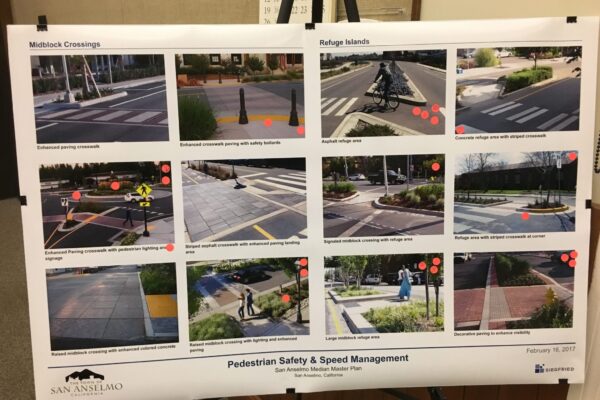The current infrastructure in more established areas of the Town of San Anselmo is typically set up to direct runoff into the Town storm drain system without retaining, filtering, or treating the stormwater in any way. The California State Water Quality Control Board (SWQCB) has set up grants, like the one for this project, so that municipalities can modify and improve their existing infrastructure to comply with the new stormwater quality guidelines. The Town of San Anselmo had identified three (3) areas they wished to implement these improvements to better the water quality in the area and reduce the amount of runoff their storm system would take on during any given storm event.
Our specific knowledge and familiarity with LID yields an appreciation and understanding of projects like these. Developed organically over time, each LID solution we come up with has an individual aesthetic grounded in the period during which it was originally developed, and influenced by use. This project bridges three distinct areas, parking, medians, and service areas. In addition to satisfying basic programmatic goals such as LID, wayfinding, and circulation, development forms must be appropriate to each area. This sensitivity results in projects that are both cohesive (by using a common palette of signing, roadways standards, and other construction), yet also create a sense of place for each public space that provides variety to the Town and intuitive visual wayfinding.
- Civil Engineering
- Landscape Architecture
- Surveying





